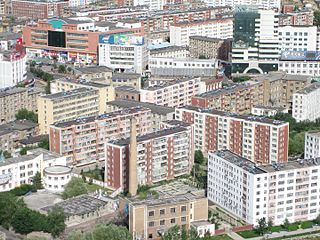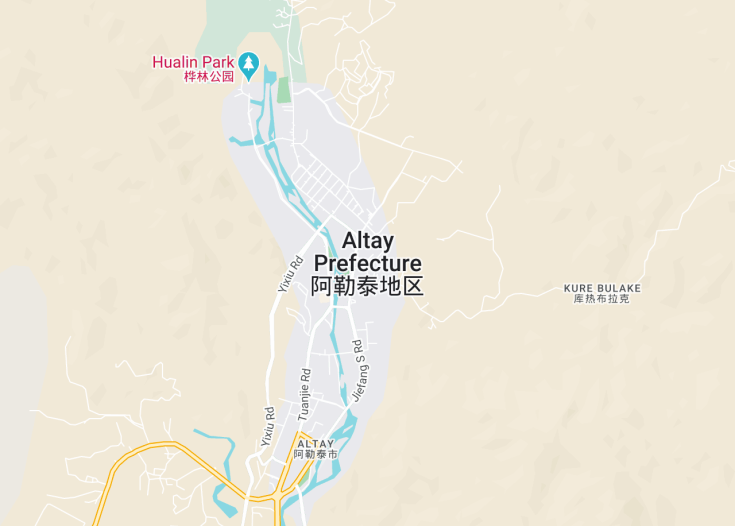Altay, nestled in the northern part of Xinjiang, China, acts as a gateway to the majestic Altai Mountains. This locale is famed for its rich historical tapestry and vibrant cultural fusion of Kazakhs, Han Chinese, and Mongols. Visitors are drawn to its stunning landscapes, from glacial lakes to expansive forests, which offer year-round outdoor activities such as skiing, hiking, and horseback riding. The city itself is steeped in a tranquil charm, with local markets and museums that narrate the long-standing heritage of the region.
For an enchanting experience, visit during the Golden Autumn Festival in September when the landscapes are awash with vibrant autumnal colors.
Be sure to explore the surrounding Altai Mountains, which are not only breathtaking but also offer trails suitable for all levels of hikers.
Top things to do & see in Altay
Select the following sights and activities to discover best tickets and tours available in Altay.
Altay: Gateway to the Golden Mountains
| Country | China |
| Time in Altay | GMT+8 |
| Language spoken | Mandarin Chinese |
| Population | 200,000 (Source: China Statistics, 2023) |
| Currency | Renminbi (¥, CNY) |
| Airports |
|
Located in the Xinjiang Uygur Autonomous Region of China, Altay is a remarkable blend of lush landscapes and rich history. Nestled at the northern tip of Xinjiang, the area around Altay has been inhabited since prehistoric times as evidenced by numerous archaeological discoveries. The city serves not only as a significant cultural hub for the local Kazakh population but also as a crucial gateway to the stunning Altai Mountains, which are renowned for their golden hues in autumn.
Altay’s strategic location makes it an important center for both tourism and commerce. The mountains offer vast natural resources and a spectacular array of biodiversity, attracting scientists, adventurers, and nature lovers from around the world. Altay thrives on its diverse blend of cultures, with a mix of Han Chinese, Kazakhs, Hui, Mongols, and others contributing to a uniquely vibrant local culture, especially noticeable during various traditional festivals such as the Naadam festival, which features wrestling, horse racing, and archery.
The economy of Altay is predominantly based on agriculture, mining, and tourism. The region is particularly famous for its gold mines and grazing lands. Over the years, Altay has also become known for its commitment to sustainable tourism practices that aim to preserve the pristine natural beauty of the surrounding landscapes while providing economic benefits to the local communities.
Education and infrastructure in Altay have seen significant improvements over the years, with investments aimed at enhancing the quality of life for its residents and making the city more accessible to international visitors. The local airport, along with improved roads, has played a pivotal role in increasing the accessibility of this once remote region.
Where is Altay?
Located in North Xinjiang, Altay is bordered by Mongolia to the north and Kazakhstan to the west.
Distances:
| Route | Distance by car | Time by car |
|---|---|---|
| From Urumqi to Altay | 620 km | Approx. 8 hours |
| From Beijing to Altay | 3,300 km | Approx. 40 hours |
What is Altay famous for?
Altay is renowned for its access to the Altai Mountains and their breathtaking natural beauty, attracting countless outdoor enthusiasts eager to explore its untouched landscapes.
History
Prehistoric Times to Han Dynasty (Before 206 BC)
The area now known as Altay has a rich history that dates back to prehistoric times. Artefacts and petroglyphs in the surrounding regions suggest that nomadic tribes roamed these parts, utilizing the vast, rich landscapes for grazing their herds. With the rise of the Han Dynasty, the region saw the introduction of administrative systems and the expansion of the Silk Road, which influenced the area culturally and economically.
Sui to Qing Dynasty (581 AD – 1912 AD)
As empires rose and fell, Altay became a strategic location due to its proximity to various Silk Road routes. During the Sui and Tang dynasties, the region was often a military outpost. By the time of the Qing Dynasty, Altay was firmly under the control of the Chinese empire, serving as a borderland that bridged the nomadic cultures of the north and the agricultural establishments in the south.
Republican Era to Present Day (1912 AD – Onwards)
With the fall of the Qing Dynasty, Altay experienced significant changes. Throughout the Republican era and subsequent rise of the People’s Republic of China, Altay has developed into a notable urban center in Xinjiang. Modernization has brought infrastructure, educational institutions, and tourism, yet the city continues to retain its cultural heritage, visible in its architecture, museums, and the daily life of its residents.
Visit Altay
What to see and do in Altay, China
Altay offers a unique blend of natural beauty and historical sites. The Kanas Lake, known for its stunning, pristine waters and mythical tales, is a must-visit. The surrounding Altay Mountains are perfect for trekking, skiing in winter, and mountain biking. For those interested in culture, the Altay Museum provides insights into the nomadic tribes of the region with extensive displays of historical artifacts.
- Explore the UNESCO World Heritage Tavan Bogd National Park
- Visit the stunning Irtysh River for rafting and fishing experiences
- Enjoy skiing at the nearby ski resorts in winter months
Festivals and Cultural Events in Altay
Altay hosts several cultural and sports events throughout the year that reflect its rich ethnic diversity. The ‘Naadam Festival’ which occurs every July, showcases traditional sports like wrestling, horse racing, and archery. In winter, the ‘Altay Ice Festival’ is a grand event that features ice sculptures and traditional games on ice.
Best time to visit Altay
The best time to visit Altay depends largely on your interests. Summer (June to August) is ideal for those who wish to explore the lush landscapes and participate in the Naadam Festival. Winter (December to February) is perfect for winter sports enthusiasts eager to experience skiing in the Altay Mountains.
Is Altay worth visiting?
Altay is certainly worth visiting for those who cherish nature and seek to explore less commercialized destinations. The region offers breathtaking landscapes, rich cultural experiences, and a chance to witness traditional nomadic lifestyles. However, it’s important to be prepared for a rugged terrain, and the extreme weather conditions can be a challenge. Nevertheless, the unique experiences and scenic beauty make it a worthwhile destination.










